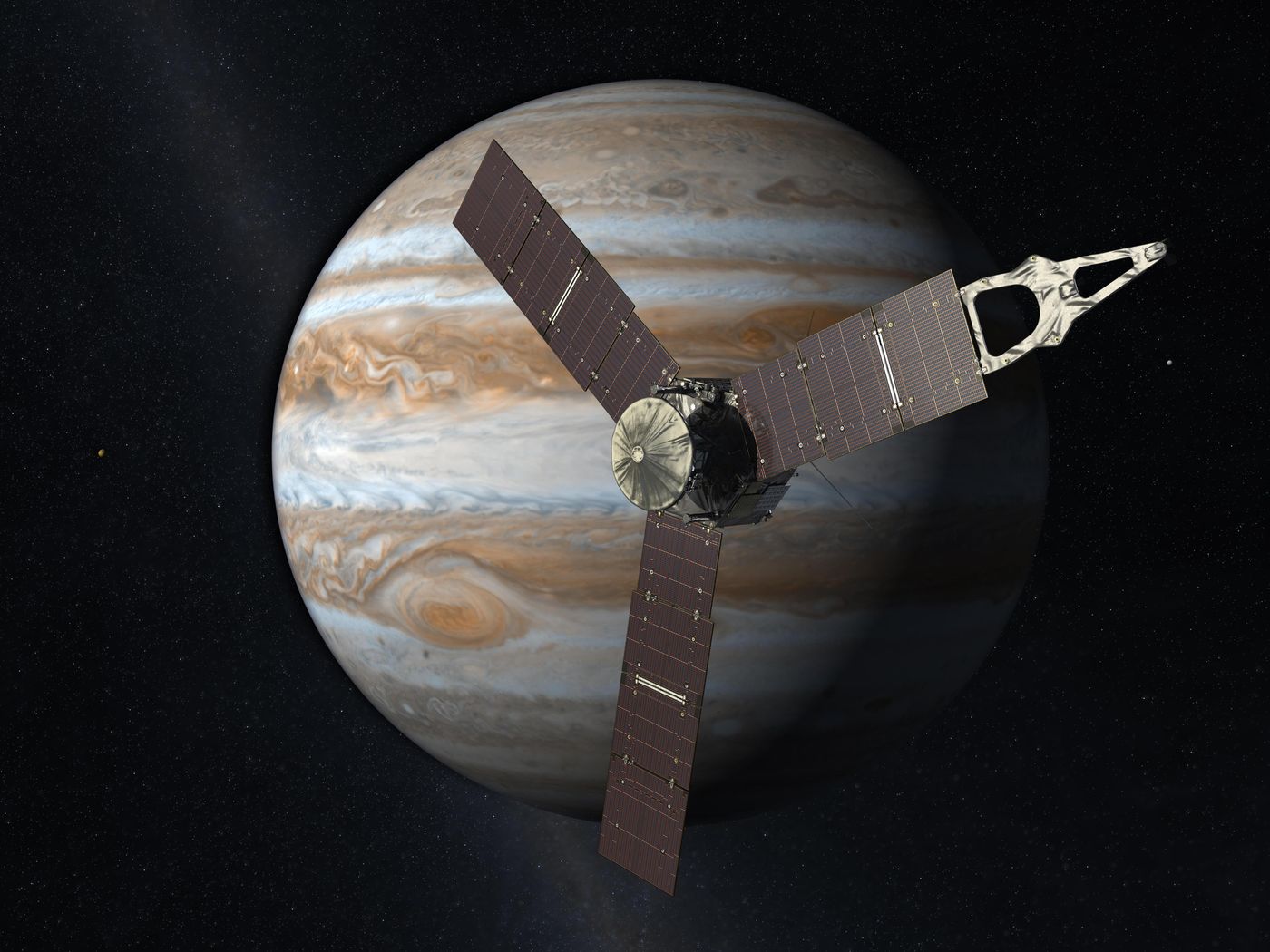Juno is Getting Closer to its July 4th Tango With Jupiter
NASA is about to get up close and personal with Jupiter, the largest known planet in our solar system. On July 4th, after a long 5-year journey from Earth, their Juno spacecraft will attempt to fire its rockets to stabilize itself so it orbits the planet within 5,000 kilometers.
This is the closest any spacecraft has ever been to Jupiter, and Juno also sets a record for being the most distant solar-powered spacecraft from Earth, surpassing the European Space Agency’s Rosetta spacecraft, which has been used to study comet 67-P for some time now.

Image Credit: NASA/JPL
Powered by three solar arrays that span about 20 meters long altogether, Juno will study Jupiter all while trying to avoid getting hit by the rocks and other space junk that Jupiter’s strong gravity sends flying around like slingshots.
Because so little is known about Jupiter, we are very much taking a plunge into the unknown. We don’t even know if this Jupiter orbit insertion missions is going to work, or if Juno can survive Jupiter’s conditions, but we have to try to know for sure.
Juno is designed to study Jupiter’s atmospheric composition and water content. With this information, NASA hopes to better understand Jupiter’s formation and existence. This mission may also provide key observations that help us to better understand the formation of our early universe.
The spacecraft will use its built-in sensors to study the planet’s magnetic and gravitational fields. These sensors are shielded by a titanium box that prevents Jupiter’s radiation from harming the equipment.
Juno is also equipped with a special camera that captures images in RGB and near infrared. These images are combined with one another to create as accurate of an image as possible, and that data is sent back to Earth via a radio signal.
Jupiter is a great way for scientists to better understand giant gas planets as a whole, and is going to be a great help in better understanding all the gassy exoplanets that look a lot like Jupiter that the Kepler mission keeps discovering in other systems.
Juno will have 20 months to orbit the planet 37 times. This is all the time we’ll get before the mission comes to an end, and NASA hopes to learn as much about Jupiter as we can before the ending.








